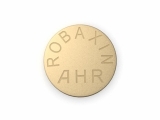Stock control procedures in pharmacy
The management of stock in a pharmacy is crucial to ensure the efficient and accurate dispensing of medications. Without proper stock control procedures, pharmacies may face issues such as stockouts, overstocking, and expiration of medications. In order to avoid these problems and maintain a well-functioning pharmacy, it is essential to implement effective stock control procedures.
One of the key elements of effective stock control procedures is regular monitoring and recording of stock levels. This involves regularly checking the quantity of medications on hand and comparing it to the ideal stock level. By doing so, pharmacy staff can identify any discrepancies and take immediate action to rectify the situation. Additionally, accurate record-keeping of stock levels allows for better forecasting and planning, ensuring that the pharmacy always has an appropriate quantity of medications available.
Another important aspect of effective stock control procedures is the implementation of a robust inventory management system. This system should include features such as barcoding, batch tracking, and automated reorder points. Barcoding allows for easy and accurate scanning of medications, reducing the chances of human error. Batch tracking ensures that medications can be traced back to their source, allowing for efficient recalls if necessary. Automated reorder points, based on historical sales data and lead times, help to prevent stockouts and ensure that medications are replenished in a timely manner.
In addition to monitoring stock levels and implementing an inventory management system, regular stock audits should be conducted to ensure accuracy. These audits involve physically counting the medications on hand and comparing the results to the recorded stock levels. Any discrepancies should be thoroughly investigated and resolved to maintain the integrity of the pharmacy's stock. This not only helps to prevent theft and reduce losses but also ensures that the medications being dispensed are safe and effective.
To sum up, effective stock control procedures are crucial in ensuring the efficiency and accuracy of a pharmacy's operations. By implementing regular monitoring and recording of stock levels, utilizing a robust inventory management system, and conducting regular stock audits, pharmacies can avoid stockouts, overstocking, and expired medications. This not only improves customer service but also helps to maintain the reputation and profitability of the pharmacy.
Overview of Stock Control
Definition of Stock Control
Stock control refers to the process of managing and monitoring the inventory of a pharmacy. It involves maintaining the right quantity of products in stock, ensuring their availability when needed, and minimizing the risk of stockouts or overstocking.
Importance of Stock Control
Efficient stock control is crucial for the smooth running of a pharmacy and its ability to meet customer demands. It helps prevent stockouts, which can lead to lost sales and dissatisfied customers, while also avoiding overstocking, which can tie up capital and lead to wastage of expired or obsolete products.
Objectives of Stock Control
The main objectives of stock control in a pharmacy are:
- To ensure the availability of products for customers
- To minimize stockholding costs
- To reduce the risk of stockouts
- To prevent overstocking and wastage
- To optimize cash flow and working capital
Key Elements of Stock Control
Effective stock control involves several key elements, including:
- Accurate inventory records: Maintaining up-to-date and accurate records of stock levels and transactions is essential to track and manage inventory effectively.
- Regular stock monitoring: Regular monitoring of stock levels and sales patterns helps identify trends, forecast demand, and make informed purchasing decisions.
- Supplier management: Building strong relationships with reliable suppliers and negotiating favorable terms can help ensure a steady supply of quality products.
- Efficient ordering and replenishment: Streamlining the ordering and replenishment process, such as setting optimal reorder points and utilizing automated systems, can help minimize delays and errors.
- Stock rotation and expiry management: Properly managing stock rotation and expiration dates is necessary to avoid selling expired products and reduce wastage.
Benefits of Effective Stock Control
Implementing effective stock control procedures in a pharmacy can bring several benefits, including:
- Improved customer satisfaction by ensuring product availability
- Reduced costs by minimizing stockholding expenses and reducing wastage
- Increased efficiency and productivity through streamlined processes
- Optimized cash flow through better inventory management
- Enhanced profitability by avoiding stockouts and lost sales
Understanding the Importance
Stock control procedures ensure the efficient and accurate management of inventory in a pharmacy. The importance of implementing these procedures cannot be overstated, as they directly impact the overall efficiency and profitability of the pharmacy.
First and foremost, effective stock control procedures help to prevent stockouts and overstocking, which can have adverse consequences for the pharmacy. When stockouts occur, customers may be forced to go elsewhere for their medication, resulting in lost sales and potential loss of customer trust. On the other hand, overstocking ties up valuable financial resources and can lead to excess stock that expires before it can be sold.
By implementing stock control procedures, pharmacies can ensure they have the right medications in the right quantities at the right time. This promotes better customer service and satisfaction, as patients can have confidence that the pharmacy will have the medications they need in stock. In addition, it helps pharmacies optimize their inventory levels, resulting in improved cash flow and reduced carrying costs.
Another important aspect of stock control procedures is their impact on operational efficiency. By accurately tracking and monitoring inventory levels, pharmacies can streamline their ordering and replenishment processes. This reduces the time and effort required to manage the stock, allowing staff to focus on other essential tasks, such as dispensing medications and providing patient care.
Finally, stock control procedures are crucial for maintaining accurate records and complying with regulatory requirements. Properly documenting stock movements and conducting regular stock audits not only ensures compliance with industry regulations but also provides valuable data for analysis and forecasting. This data can be used to identify trends, optimize ordering schedules, and make informed business decisions.
Overall, understanding the importance of effective stock control procedures is essential for pharmacy owners and managers. By implementing these procedures, pharmacies can improve their efficiency, accuracy, and customer service, ultimately leading to increased profitability and success in a highly competitive market.
Stock Management Systems
Stock management systems are essential tools for maintaining efficient and accurate stock control in a pharmacy. These systems help pharmacy staff keep track of inventory levels, monitor expiration dates, and ensure that the right medications and supplies are always available to meet patient needs.
One type of stock management system commonly used in pharmacies is the barcode system. Each medication or supplies item is assigned a unique barcode, which can be scanned using a handheld barcode scanner. This allows pharmacy staff to quickly and accurately record stock levels, update inventory records, and track items as they are used or restocked.
Automated stock replenishment systems are another important tool in stock management. These systems use algorithms and data analysis to predict when stock levels are likely to run low, based on factors such as historical sales data, seasonality, and anticipated demand. When stock levels fall below a certain threshold, the system can automatically generate purchase orders or send alerts to pharmacy staff, ensuring that stock is replenished in a timely manner.
In addition to barcode systems and automated stock replenishment systems, many pharmacies also use electronic inventory management systems to keep track of their stock. These systems allow pharmacy staff to easily access and update inventory data, monitor expiration dates, and generate reports on stock levels and usage patterns. This helps pharmacy managers make informed decisions about stock ordering and rotation, reducing waste and ensuring that the pharmacy is always well-stocked with the medications and supplies that patients need.
Implementing Efficient Software
Automating Stock Control Processes
To improve the efficiency and accuracy of stock control procedures in a pharmacy, implementing efficient software can be highly beneficial. The use of automated systems can help streamline inventory management and reduce the likelihood of errors. By automating tasks such as tracking stock levels, placing orders, and generating reports, software can save time and resources, allowing pharmacy staff to focus on other important aspects of their work.
Real-Time Tracking and Monitoring
Efficient software enables real-time tracking and monitoring of stock levels, ensuring that pharmacies always have the necessary medications and supplies in sufficient quantities. With a centralized database, staff can easily access information about stock availability, expiration dates, and reorder points. This real-time visibility allows for proactive management, ensuring that stock is replenished before running out and preventing overstock situations.
Integration with Supplier Systems
An efficient software solution should have the capability to integrate with supplier systems. This integration enables seamless communication between the pharmacy and its suppliers, simplifying the ordering process. When stock levels reach a specified threshold, the software can automatically generate purchase orders and send them to suppliers. This reduces the need for manual intervention and minimizes the risk of human errors in the procurement process.
Reporting and Analytics
Efficient software provides robust reporting and analytics capabilities, allowing pharmacies to gain insights into their stock control processes. Through customizable reports, pharmacy staff can analyze trends, identify slow-moving items, and make data-driven decisions regarding stock management. By having access to accurate and timely information, pharmacies can optimize their inventory levels, minimize wastage, and improve overall operational efficiency.
In conclusion, implementing efficient software in a pharmacy's stock control procedures can greatly enhance efficiency and accuracy. Through automation, real-time tracking, integration with supplier systems, and reporting and analytics, pharmacies can better manage their inventory, ensure timely availability of medications and supplies, and make informed decisions about stock management.
Effective Ordering Processes
Efficient ordering processes are essential in maintaining an accurate and well-organized inventory in a pharmacy. By implementing effective ordering procedures, pharmacists can ensure that medications are always available for patients, reducing the risk of shortages or delays in treatment.
1. Regular assessment of stock levels: It is important for pharmacy staff to regularly assess the stock levels of medications. By monitoring inventory on a consistent basis, pharmacists can identify which medications need to be replenished and avoid the risk of overstocking.
2. Prioritizing critical medications: Pharmacy staff should give priority to ordering critical medications, such as those with high demand or ones that are frequently prescribed. By ensuring a sufficient supply of essential medications, the pharmacy can meet the needs of patients without any disruptions.
3. Establishing vendor relationships: Developing strong relationships with reliable vendors is crucial for a smooth ordering process. Pharmacists should choose vendors that offer competitive pricing, quick delivery times, and excellent customer service. Regular communication with vendors can help resolve any issues that may arise, such as product recalls or delays.
4. Utilizing technology: Leveraging technology can greatly improve the efficiency of ordering processes. Many pharmacies use computerized inventory systems that track stock levels and automatically generate order requests for low or out-of-stock items. Implementing barcode scanning systems can also help streamline the ordering process and reduce the risk of human error.
5. Documentation and record-keeping: Accurate documentation and record-keeping are essential for maintaining a well-organized ordering process. Pharmacy staff should maintain detailed records of all orders placed, including the quantity, date, and cost of each item. This information can be useful for analyzing trends and making informed decisions for future orders.
By implementing these effective ordering processes, pharmacies can ensure that they have the right medications in stock at the right time, leading to improved efficiency and accuracy in the overall stock control procedures.
Streamlining Inventory Replenishment
Efficient inventory replenishment is crucial for maintaining a well-functioning pharmacy and ensuring that medications and other supplies are always available to meet patient needs. By streamlining the inventory replenishment process, pharmacies can reduce the risk of stockouts, minimize waste, and improve overall efficiency.
Automated Ordering Systems: Implementing automated ordering systems can greatly streamline the inventory replenishment process. These systems use data analysis and predictive algorithms to automatically generate purchase orders based on historical sales data, current stock levels, and other relevant factors. This not only saves time and effort but also helps to ensure that orders are placed in a timely and accurate manner.
Centralized Inventory Management: Centralizing inventory management across multiple pharmacy locations can help streamline replenishment by providing a comprehensive view of stock levels and needs. This allows for better coordination and optimization of orders, as well as the ability to transfer stock between locations to meet demand. Additionally, centralized inventory management systems can provide real-time visibility into inventory data, allowing for quicker decision-making and a more proactive approach to replenishment.
Effective Vendor Collaboration: Building strong relationships with vendors and suppliers is essential for efficient replenishment. Collaborating with vendors to develop mutually beneficial agreements, such as consignment or automated replenishment programs, can help streamline the ordering and delivery process. Regular communication with vendors is also important to stay informed about product availability, lead times, and any potential disruptions in the supply chain.
Regular Audits and Stock Checks: Conducting regular audits and stock checks can help identify inaccuracies, discrepancies, and areas for improvement in the inventory replenishment process. By verifying stock levels, expiration dates, and item accuracy, pharmacies can ensure that they are ordering the right quantities at the right time. Regular audits also help identify any potential issues, such as slow-moving or obsolete items, that may be impacting the overall efficiency of the replenishment process.
Continuous Process Improvement: To streamline inventory replenishment in the long term, pharmacies should adopt a continuous improvement mindset. This involves regularly assessing and evaluating the effectiveness of existing processes, identifying areas for improvement, and implementing changes and enhancements accordingly. By continuously optimizing inventory replenishment procedures, pharmacies can achieve higher levels of efficiency, accuracy, and customer satisfaction.
Inventory Accuracy
Inventory accuracy is a crucial aspect of stock control procedures in a pharmacy. It refers to the level of precision and correctness in tracking and managing the inventory of medications and other pharmaceutical products.
Accurate inventory management ensures that the pharmacy always has the right products in stock, minimizing overstocking and understocking situations. This is important for meeting customer demands and maintaining customer satisfaction.
To achieve inventory accuracy, pharmacies need to establish effective processes for receiving, storing, and tracking medications. This includes conducting regular stock counts and reconciling them with the recorded inventory levels. Implementing a barcode or RFID system can help automate this process and reduce human errors.
Pharmacies should also have proper documentation and record-keeping procedures in place to track the movement of inventory accurately. This includes recording details such as batch numbers, expiration dates, and quantities received and dispensed.
Regular audits and reviews of inventory data are essential to identify and correct any discrepancies or inaccuracies promptly. This helps in maintaining accurate stock levels and avoiding stockouts or expired product issues.
Overall, maintaining inventory accuracy is vital for pharmacy efficiency and ensuring the availability of the right medications at the right time. By implementing effective stock control procedures and leveraging technology, pharmacies can optimize inventory management and provide quality service to their customers.
Maintaining Precise Records
One of the key aspects of effective stock control in a pharmacy is maintaining precise records. This involves keeping track of the inventory levels, expiration dates, and usage patterns of various medications and medical supplies. Accurate record-keeping is crucial for ensuring that the pharmacy always has the necessary items in stock and avoids overstocking or understocking.
There are several ways to maintain precise records:
- Utilizing a computerized inventory management system: Such a system allows pharmacists to track the movement of each item in real-time. It can generate reports on stock levels, usage patterns, and expiration dates, enabling the pharmacist to make informed decisions regarding restocking.
- Implementing a barcoding system: Barcoding items can help streamline the stock control process by reducing human errors in data entry. Scanning barcodes can quickly update the inventory system and provide accurate information on stock levels.
- Regular stock taking: Conducting regular physical counts of inventory is essential to verify the accuracy of the records. By comparing these counts with the system records, any discrepancies or errors can be identified and corrected promptly.
It is important to note that maintaining precise records goes beyond just recording stock levels. It also includes recording any discrepancies or incidents related to the stock, such as damaged or expired items, incorrect deliveries, or theft. These records can help identify patterns, optimize stock control processes, and address any issues that may arise.
In conclusion, by maintaining precise records, pharmacies can ensure that their stock control procedures are efficient and accurate. This allows them to provide timely and reliable medical supplies to their patients, avoid wastage due to expired or damaged items, and optimize their inventory management processes for cost-effectiveness.
Stock Monitoring
Stock monitoring is a crucial aspect of effective stock control procedures in a pharmacy. It involves keeping track of the inventory levels and making sure that the right products are available in the right quantities at all times. By implementing a systematic stock monitoring process, pharmacies can ensure efficiency and accuracy in their operations.
Regular Stock Audits: Conducting regular stock audits is essential to monitor the inventory levels. This involves physically counting the stock on hand and comparing it with the records in the pharmacy's system. Any discrepancies should be investigated and resolved promptly to avoid stockouts or excess inventory.
Real-time Inventory Tracking: Utilizing a reliable inventory management system allows pharmacies to track their stock in real-time. This enables them to have accurate visibility of stock levels, identify items that are running low, and place orders in a timely manner. Real-time inventory tracking also helps in reducing the risk of stockouts or overstocking.
Monitoring Shelf Life: It is important for pharmacies to monitor the shelf life of their products to prevent expired items from being dispensed to patients. Implementing a system that tracks expiration dates and prompts for reordering or removal of expired items can help maintain the quality and safety of the stock.
Analyzing Stock Movement: Analyzing the movement of stock can provide valuable insights for improving stock control procedures. By understanding which products have high demand and which ones are slow-moving, pharmacies can optimize their inventory management strategies. This may involve adjusting reorder points, implementing promotions or discounts, or removing slow-moving items from the stock.
Supplier Management: Efficient stock monitoring also involves effective supplier management. Pharmacies should maintain good relationships with their suppliers and regularly review the performance of each supplier. This includes evaluating their delivery times, accuracy of orders, and pricing. Having reliable suppliers ensures that the pharmacy can restock its inventory in a timely manner and at competitive prices.
In conclusion, stock monitoring is a critical component of an efficient and accurate stock control system in a pharmacy. By implementing regular audits, real-time inventory tracking, monitoring shelf life, analyzing stock movement, and managing suppliers effectively, pharmacies can ensure that they have the right products available at the right time while minimizing the risk of stockouts or excess inventory.
Regular Auditing and Reporting
Regular auditing and reporting are essential components of effective stock control procedures in a pharmacy. Conducting regular audits helps to identify any discrepancies or errors in inventory management, ensuring that the pharmacy maintains accurate records of its stock levels. Audits can be performed using various methods, such as physical counting of stock, comparing sales records with stock levels, and reconciling purchase orders with received goods. The findings from audits can then be used to update and adjust stock records accordingly.
Reporting plays a crucial role in monitoring and analyzing stock control processes in the pharmacy. By generating regular reports on stock levels, sales, and inventory turnover, the pharmacy can gain insights into its stock management practices. These reports can highlight trends, identify slow-moving or obsolete stock, and help in making informed decisions about stock replenishment and ordering. The reporting process should be well-defined and include key metrics and performance indicators that are relevant to the pharmacy's specific needs and goals.
Auditing and reporting also contribute to better transparency and accountability in stock control procedures. By regularly reviewing and documenting stock information, the pharmacy can demonstrate compliance with regulations and industry standards. This can be particularly important for pharmacies that handle controlled substances or other sensitive medications. Having accurate and up-to-date stock records also allows for proper management of expired or recalled products, reducing the risk of patient harm and potential legal issues.
Staff Training and Accountability
In order to maintain effective stock control procedures in a pharmacy, staff training and accountability are crucial. A well-trained and knowledgeable staff can ensure that stock levels are accurately recorded and maintained, reducing the risk of errors or discrepancies.
Training should include detailed instruction on proper stock rotation and ordering processes. This includes educating staff on how to properly check product codes, expiration dates, and inventory levels to ensure accuracy. The use of appropriate software systems should also be taught, as well as how to handle any troubleshooting that may arise.
Accountability is also important to maintain effective stock control. Each staff member should have clear responsibilities and be held accountable for their actions. This includes regularly auditing stock levels and conducting periodic physical inventory counts to compare against recorded levels.
Regular staff meetings can be used as a platform to discuss any issues or concerns related to stock control. This encourages open communication between team members and allows for the sharing of best practices and suggestions for improvement. Implementing performance metrics and reward systems can also help to motivate staff and promote accountability.
In summary, staff training and accountability play a vital role in ensuring efficient and accurate stock control in a pharmacy. By providing proper training and holding staff accountable for their actions, pharmacies can minimize errors and discrepancies, leading to smoother operations and improved customer satisfaction.
Ensuring Compliance and Responsibility
In a pharmacy, it is of utmost importance to ensure compliance with regulatory requirements and to take responsibility for the proper handling of stock. This includes adhering to guidelines set by regulatory bodies such as the Food and Drug Administration (FDA) and maintaining accurate records of stock transactions.
One way to ensure compliance is by implementing a system of regular audits and inspections. These can help identify any discrepancies in stock levels or improper handling of medications. By conducting these audits, pharmacies can take appropriate action to address any issues and prevent potential regulatory violations.
Another aspect of ensuring compliance and responsibility is training pharmacy staff on proper stock control procedures. This includes educating them on the importance of accurate record-keeping, proper storage and handling of medications, and the consequences of noncompliance. By providing thorough training, pharmacies can empower their staff to take ownership of their responsibilities and ensure compliance with regulations.
In addition, it is crucial for pharmacies to establish clear internal policies and procedures regarding stock control. This includes defining roles and responsibilities for staff members involved in stock management, implementing regular inventory checks, and setting guidelines for the disposal of expired or damaged medications. By establishing and enforcing these policies, pharmacies can create a culture of compliance and responsibility within their organization.
Overall, ensuring compliance and responsibility in stock control is essential for the efficient and accurate operation of a pharmacy. By following regulatory guidelines, conducting regular audits, training staff, and implementing clear policies, pharmacies can minimize risks, maintain proper stock levels, and provide safe and effective medications to their customers.
Follow us on Twitter @Pharmaceuticals #Pharmacy
Subscribe on YouTube @PharmaceuticalsYouTube





Be the first to comment on "Stock control procedures in pharmacy"